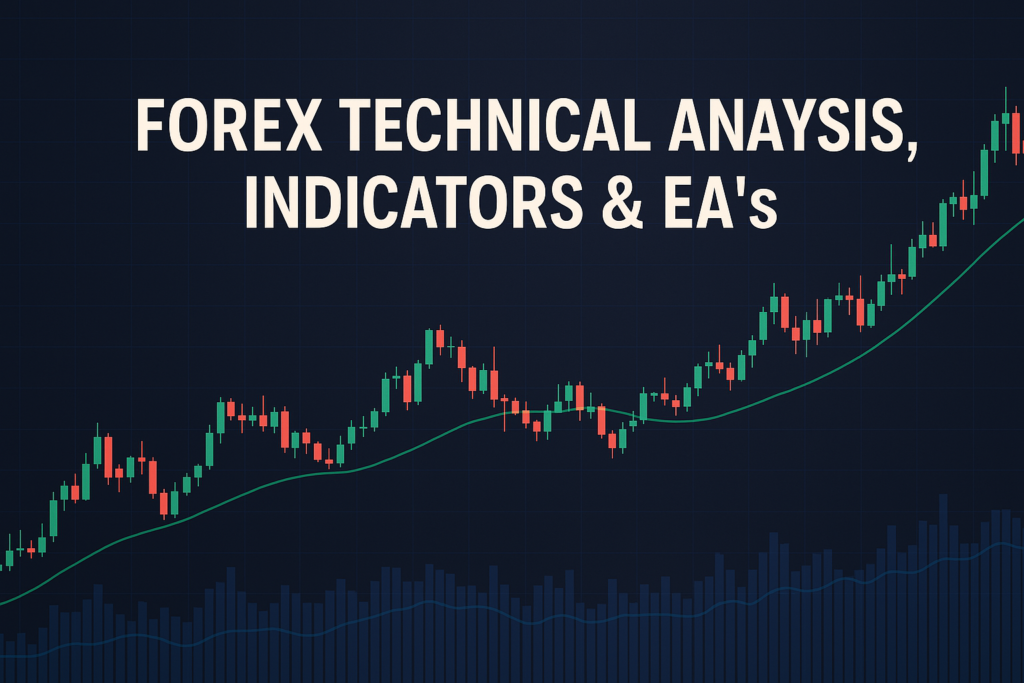
The ATR trading system is essential for traders looking to manage risk and understand market volatility effectively.
The ATR trading system, or Average True Range, is a powerful tool used in Forex trading. It helps traders understand market volatility. By measuring the range of price movements, the ATR trading system gives traders insight into potential price movement. This can be crucial for making informed trading decisions.
However, both beginners and experienced traders can struggle with the ATR trading system. Many find it difficult to interpret the signals it provides or to integrate it into their overall trading strategy. Understanding how to use this system effectively can be the difference between success and failure in trading.
This article will guide you through the ATR trading system, its history, advantages, disadvantages, and practical strategies for using it effectively.
To further enhance your trading knowledge, it’s beneficial to learn about understanding MACD Moving Average Convergence Divergence. This indicator can work well alongside the ATR trading system for more comprehensive analysis.
What is an ATR Trading System?
The ATR trading system is a tool that measures market volatility. In simple terms, it shows how much a currency pair moves over a specific period. For example, if the ATR for a currency pair is 100 pips, it means that, on average, the price moves 100 pips per day. This can help traders decide when to enter or exit trades.
Types of ATR Trading System
There are several types of ATR trading systems. These can include:
- Simple ATR: A straightforward calculation of the average true range over a set number of periods.
- Exponential ATR: Gives more weight to recent price movements, making it more responsive to current market conditions.
- Weighted ATR: Similar to the exponential ATR but uses a different weighting method.
How ATR Trading System Smooths Out Price Action
The ATR trading system smooths out price action by averaging the price movements over time. This means that it helps traders see the bigger picture, rather than getting caught up in daily price fluctuations. For example, if a trader looks at daily price movements, they might see a lot of noise. But with the ATR, they can see the average movement and make better decisions.
Common Periods Used and Why
Traders often use different periods for the ATR, such as 14 days or 21 days. The 14-day ATR is popular because it balances short-term and long-term movements. Using a longer period can smooth out price action even more, but it may lag behind current market conditions.
The History of ATR Trading System: How It Became Popular
The ATR trading system was created by J. Welles Wilder Jr. in 1978. He introduced it in his book, “New Concepts in Technical Trading Systems.” Wilder wanted to provide traders with a tool to measure volatility, which was often overlooked at the time.
When Did Traders Start Using It Widely?
Traders began to use the ATR trading system widely in the 1980s. As more traders started to recognize the importance of volatility in trading strategies, the ATR gained popularity. It became a staple in many trading platforms.
Real-Life Stories
Many professional traders have credited the ATR trading system for their success. For instance, a trader might use the ATR to identify when to enter a position. By understanding the volatility, they can set their stop-loss orders effectively, protecting their investments. Successful traders often share how the ATR helped them avoid losses during volatile market conditions.
Advantages of ATR Trading System
There are several advantages to using the ATR trading system:
- Helps Identify Trends Easily: The ATR can show when a market is trending, helping traders make informed decisions.
- Useful for Dynamic Support and Resistance: Traders can use ATR levels to set support and resistance based on market volatility.
- Works Well for Crossover Strategies: The ATR can be combined with other indicators for crossover strategies.
Disadvantages of ATR Trading System
Despite its advantages, the ATR trading system has some drawbacks:
- lags Behind Price Movements: Since it is an average, it may not react quickly to sudden price changes.
- Can Give False Signals in Sideways Markets: In a ranging market, the ATR may not provide reliable signals.
How to Apply ATR Trading System on MT4 & MT5
Applying the ATR trading system on MT4 or MT5 is straightforward:
Step-by-Step Guide to Adding ATR Trading System on Charts
To add the ATR indicator, go to the “Insert” menu, select “Indicators,” then “Trend,” and finally click on “Average True Range.” This will place the ATR on your chart.
Customizing ATR Trading System Settings
You can customize the ATR settings by right-clicking on the indicator. Adjust the periods, colors, and types to suit your trading style.
Saving Templates for Easy Application
Once you have set up the ATR, you can save the template. Go to “Template” in the top menu and click “Save Template.” This allows you to quickly apply the same settings to other charts.
5 to 7 Trading Strategies Using Only ATR Trading System
Here are some effective strategies using only the ATR trading system:
All Time Frame Strategy (M5 to D1)
This strategy uses the ATR to determine entry and exit points across multiple time frames. For example, a trader might look for a high ATR value on the M5 chart to enter a buy position, setting a stop-loss based on the ATR value.
Trending Strategies
In trending markets, traders can use the ATR to confirm the strength of the trend. If the ATR increases, it indicates a strong trend, and traders can enter positions in the direction of the trend.
Counter Trade Strategies
Traders can use the ATR to identify potential reversals. If the ATR shows low volatility, it may indicate a market that is about to change direction. This can be a good time to enter a counter-trend trade.
Swing Trades Strategies
For swing trades, traders can use the ATR to set their target levels. By analyzing the ATR, they can identify potential price targets and set their profit-taking levels accordingly.
5 to 7 Trading Strategies Combining ATR Trading System with Other Indicators
Combining the ATR trading system with other indicators can enhance your trading strategy. Here are some effective strategies:
All Time Frame Strategy (M5 to D1)
This strategy uses the ATR along with moving averages. A trader can enter a buy position when the price is above the moving average and the ATR is increasing, indicating a strong trend.
Trending Strategies
Combining the ATR with the RSI (Relative Strength Index) can be effective. If the ATR is high and the RSI indicates an overbought condition, it could be a signal to sell.
Counter Trade Strategies
Using the ATR with the Fibonacci retracement levels can help traders identify potential reversals. If the price reaches a Fibonacci level and the ATR indicates lower volatility, it could signal a counter-trend setup.
Swing Trades Strategies
Traders can combine the ATR with Bollinger Bands. When the price touches the upper band and the ATR is high, it may indicate a potential sell opportunity.
For more insights into trading, consider exploring FX online trading. This can provide you with essential strategies for success.
Top 10 FAQs About ATR Trading System
Here are some frequently asked questions about the ATR trading system:
- What does ATR stand for? ATR stands for Average True Range.
- How is ATR calculated? ATR is calculated by averaging the true ranges over a specific period.
- What is a good ATR value? A good ATR value depends on the currency pair and market conditions.
- Can I use ATR for day trading? Yes, ATR can be useful for day trading by identifying volatility.
- How often should I check the ATR? It’s good to check the ATR regularly, especially before entering a trade.
- Does ATR provide buy/sell signals? Not directly; it measures volatility, which can help inform trading decisions.
- Can ATR help set stop-loss levels? Yes, traders often use ATR to determine stop-loss distances.
- Is ATR useful in all markets? While it is primarily used in Forex, ATR can be applied to other markets too.
- What is the best period for ATR? The 14-day period is commonly used, but it can vary based on trading style.
- Can ATR be used with other indicators? Yes, combining ATR with other indicators can enhance trading strategies.
Conclusion
In summary, the ATR trading system is a valuable tool for understanding market volatility. By recognizing its advantages and disadvantages, traders can effectively incorporate it into their strategies. Remember, practice is key. Before using real money, test different strategies to see what works best for you.
With a solid understanding of the ATR trading system, you can navigate the Forex market with more confidence. Embrace the learning process and keep refining your approach for success.
Want to level up your trading skills? Check out trusted insights from Myfxbook, World Bank
Expand Your Knowledge
- 📌 Forex Trading Learning Road Map
- 📌 Forex Trading Course with no Fees
- 📌 Forex Trading Issues, Problems, and Solutions
- 📌 Forex Daily Forecast & Live Updates
- 📌 Forex Fundamental & News Analysis: Tomorrow’s Market Movers & Trade Opportunities
- 📌 Forex Education Hub: Learn & Profit
- 📌 Forex Technical Analysis, Indicators & EA’s
Start Trading Today
Ready to take your forex trading to the next level? Open an account with Exness, one of the most trusted platforms in the industry. 👉 Sign Up Now and trade with confidence!
My recommended broker stands out with ultra-low spreads for beginners, instant withdrawals, and zero spread accounts for pro traders.
Trusted since 2008, lightning-fast execution, no hidden fees, and a secure, transparent trading environment—giving you the edge you need to succeed. 🚀
YouTube Video Library: Related Videos
Note: The video above is embedded from YouTube and is the property of its original creator. We do not own or take responsibility for the content or opinions expressed in the video.


